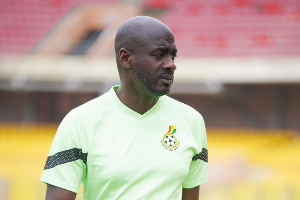A new report by a South Africa-based campaign and advocacy organization, One Campaign, has revealed that Ghana is on track towards becoming an HIV/AIDS-free country, thanks to the various interventions made by successive governments since 2002.
According to the ONE CAMPAIGN 2013 AIDS Report, dubbed 'beginning of the end of AIDS', between 2002 and the end of 2012, new HIV infections fell from 26,000 to 8,000 - representing 70%, while the adult prevalence rate also dropped from 2.21% to 1.3%.
At the same time, the number of people newly added to AIDS treatment increased from virtually zero in 2002, to 2,300 in 2005, and 15,000 by 2012. In that year, the report noted, 58% of people eligible for treatment were receiving it.
But the report was quick to add that the country had been comparatively slow in scaling up its Anti-Retroviral (ARV) treatment.
The report, released late last week, puts the country's AIDS ratio of people newly infected, to people newly added to treatment above nine in 2005, to below the tipping point of 0.52 in 2012.
"Ghana has improved this ratio significantly in recent years, cutting it nearly four-fold in just the last three years, down from a ratio of 1.9 in 2009," the report noted.
One Campaign defines the 'beginning of the end of AIDS' at a time when the total number of new HIV infections is lower than the number of patients newly receiving AIDS treatment in the same year.
The report noted that in 2013, Ghana emerged as the country that had achieved the greatest percentage reduction in new paediatric HIV infections - down an impressive 76% since 2009. It argued that should the level of progress be sustained, the country would "achieve the goal of virtual elimination before 2015."
The report attributed the huge success made by the country to high levels of domestic financing for health programmes, and commended successive governments for their commitment towards the fight against HIV/AIDS.
"This level of success has been made possible by the government's high level of commitment to fighting AIDS."
Ghana's highest political leadership continues to be vocal about the epidemic, with President John Dramani Mahama actively promoting the fight against AIDS, both as President and Vice-President, through published articles, updates to Parliament on the status of Ghana's AIDS epidemic, and speeches to the Ghanaian people.
"National AIDS planning efforts have also been strong for more than a decade," the report acknowledged the political will of the Ghanaian Government.
In 2002, the government established the Ghana AIDS Commission (GAC) as the coordinating body of the national response for HIV/AIDS, bringing together key stakeholders, including representatives of ministries, the private sector, religious leaders, civil society, and people living with HIV.
One of the GAC's key roles is to develop the National Strategic Framework on HIV/AIDS; the first of these, developed soon after the Commission's formation, outlined clear targets on prevention, care and support, creating an enabling environment, and quantitative targets that were then expanded upon in the second and third national strategic plans (2006-10 and 2011-15 respectively).
The GAC's large-scale "Know Your Status" campaigns have been particularly crucial in achieving almost universal awareness of HIV in Ghana (98% for women and 99% for men 16). One of the country's most impressive achievements has been a dramatic reduction in new child HIV infections.
To help drive this success, the country increased the number of Prevention of Mother-to-Child Transmission (PMTCT) centers eight-fold, between 2005 and 2011, which, in turn, increased the proportion of HIV-positive pregnant women receiving PMTCT treatment from 32% in 2009 to 95% in 2012.
However, despite the gains made in reducing HIV/AIDS infections, the country fell short in scaling up its ARV treatment, the report said.
According to the South Africa-based firm, the country's ARV coverage rate of 58% was lower than the sub-Saharan African average of 62.5% coverage. It also identified the country's low medical clinic-to-patient ratio of 0.1 physicians for every 1,000 people in 2010, as a challenge that hindered access to treatment.
Commenting on the way forward, One Campaign recommended the decentralizing of the country's HIV testing, care and treatment services, since that was critical to providing more people with life-saving AIDS treatment in the years to come, including those with CD4 counts above 350 cells/mm3.
Health News of Wednesday, 27 November 2013
Source: allafrica.com
















